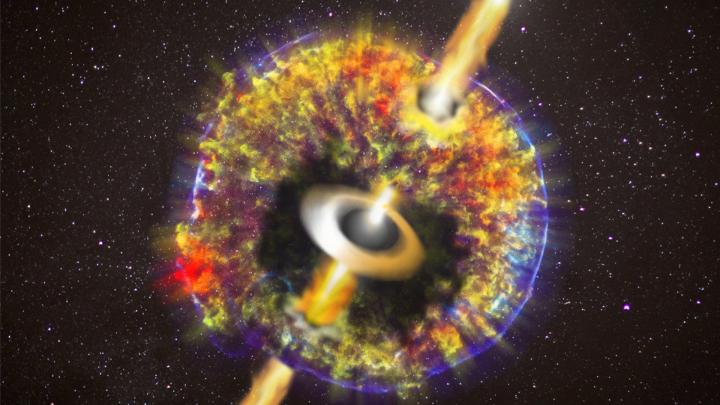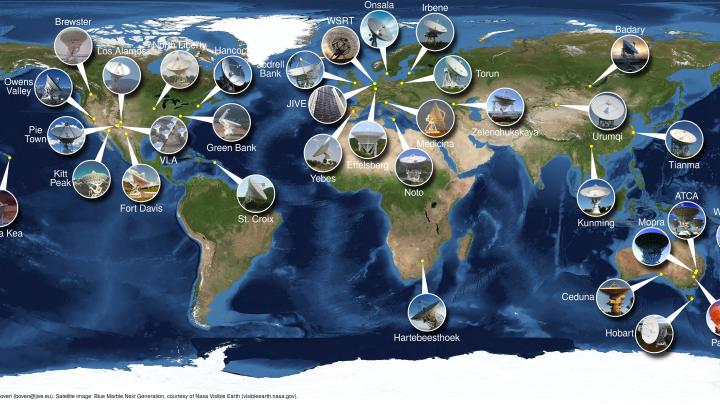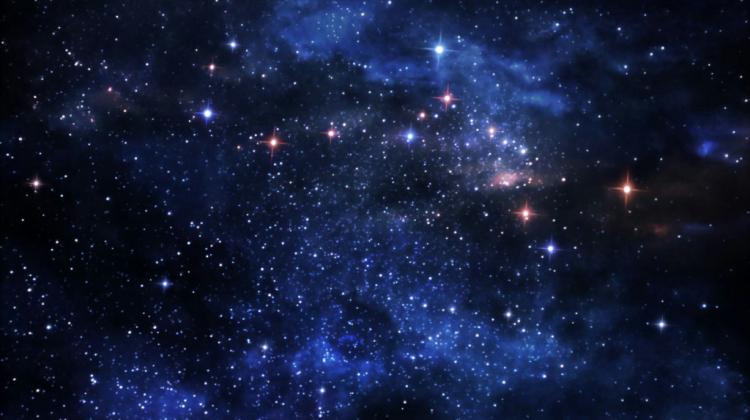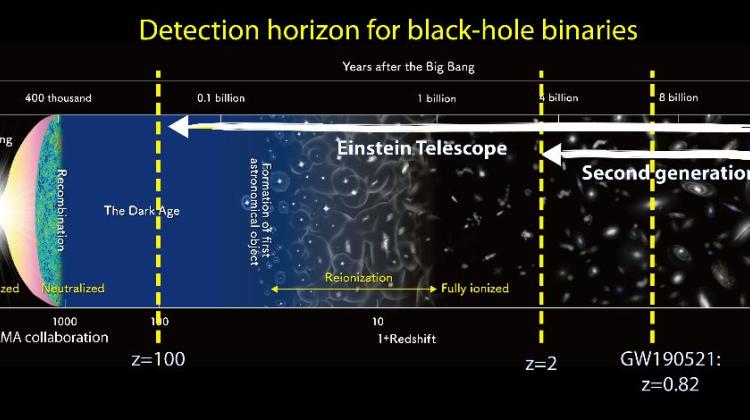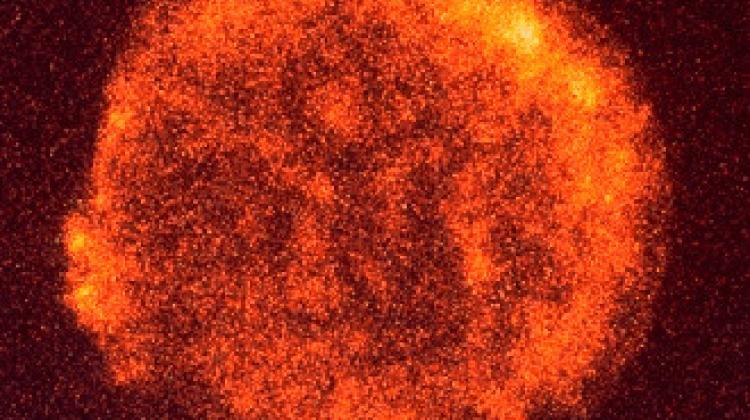A global network of radio telescopes investigates the source of gravitational waves
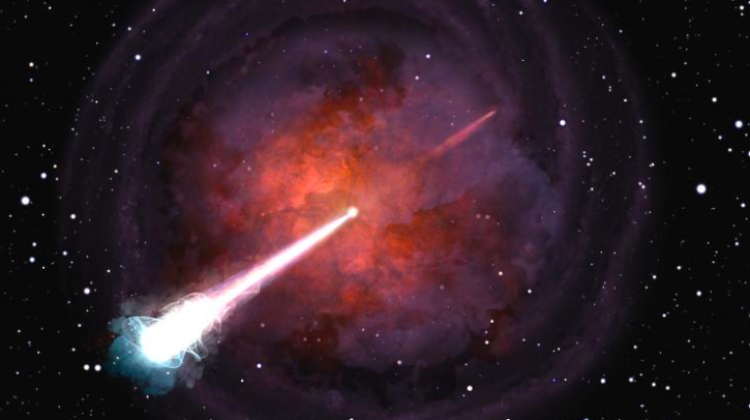 Artist's impression shows two neutron stars merging with a jet bursting through. (Beabudai Design)
Artist's impression shows two neutron stars merging with a jet bursting through. (Beabudai Design)
Astronomers have combined the forces of several dozens of radio telescopes from five continents to study the remnant of the merger of two neutron stars, for which the gravitational wave GW170817 was detected in August 2017. A radio telescope of the Centre for Astronomy of the Nicolaus Copernicus University in Toruń participated in the observations.
The research results have been published in the latest issue of Science. One of the authors of the publication is Dr. Marcin Gawroński from the Centre for Astronomy of the Nicolaus Copernicus University.
The gravitational wave detection designated GW170817 was of great scientific significance. Earlier detections of gravitational waves were associated with the process of black holes merging, while in the case of GW170817, two neutron stars merged.
What`s more, in parallel on electromagnetic waves, astronomers observed the theoretically predicted kilonova event (consisting in the merger of two degenerated stars such as neutron stars) from the same place, thus confirming that gravitational waves actually exist and we are able to detect them.
Kilonova SSS17a exploded in the NGC 4993 galaxy, 130 million light years away from us. Astronomers observed the phenomenon and its subsequent evolution in the entire range of electromagnetic waves, from gamma and X-ray radiation to visible light and radio waves.
In particular, just over two hundred days after the kilonova event, observations were made using a global network of radio telescopes. On March 12, 2018, the European network of radio telescopes EVN (European VLBI Network) along with other similar networks in the world pointed their radio telescopes at this part of the sky. This observation technique is called very long baseline interferometry and allows to obtain very high resolution images.
The collected data were sent to the JIVE centre in the Netherlands, where, thanks to advanced processing techniques, it was possible to obtain images with a resolution comparable to that of observing a human figure on the surface of the Moon.
These analyses allowed to check how part of matter ejected during the kilonova explosion spread. Generally, matter ejected in this process forms a shell around the object, but part of it should also be ejected in the form of a jet (stream of matter). It was unclear whether the jet could burst through the shell and move further into space, or maybe it could not do it, and instead generate an expanding bubble around the object. It turns out that we are dealing with the first scenario - the jet did burst through the shell.
Researchers from the group led by Giancarlo Ghirland (National Institute of Astrophysics, INAF, Italy) note that the jet contains as much energy as all the stars in our galaxy (the Milky Way) produce during the year. They emphasize that it is amazing that this energy is stored in an area smaller than a light year.
A Polish astronomer, Dr. Marcin Gawroński from the Centre for Astronomy of the Nicolaus Copernicus University participated in the research project. The scientist explains that, kilonova events are important for the chemical evolution of the Universe, as they are the main source of nucleosynthesis of most of the heavy chemical elements. Thus, they contribute to the emergence of animated matter in the Universe.
"It is also worth noting that kilonova events are the most important source of gold and platinum. The existence of these elements on Earth indicates that in the vicinity of the cloud of dust and gas, from which the Solar System formed, a kilonova event had occurred, which then contaminated the proto-solar cloud with processed matter. We are therefore partially built of matter from a kilonova explosion in the Milky Way" - adds Dr. Gawroński.
Over 30 radio telescopes and radio telescope networks participated in the observations.
PAP - Science in Poland
cza/ ekr/ kap/
tr. RL
Przed dodaniem komentarza prosimy o zapoznanie z Regulaminem forum serwisu Nauka w Polsce.



